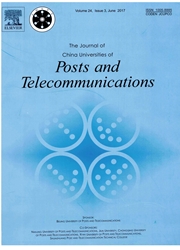

 中文摘要:
中文摘要:
在这份报纸,一基于簇虚拟多重输入多重产量(MIMO ) 传播建筑学为抑制精力的无线传感器网络被建议。在建议建筑学,而不是把簇成员用作合作节点,多重簇头合作形成虚拟天线数组以便 MIMO 传播能被实现。根据在这体系结构使用的 MIMO 技术,二个不同计划,垂直贝尔实验室分层的时空(V 强风) 基于簇头合作社传播(VCHCT ) ,空间时间块代码(STBC ) 基于簇头合作社传播(SCHCT ) ,被开发。基于通讯精力消费模型,为 VCHCT 和 SCHCT 的全面精力消费模型被导出。在这二个计划和原来的低精力的适应聚类层次之间的详细比较(沥滤) 被执行调查这二个计划的表演。模拟结果不仅验证理论分析而且证明二个计划有他们的特定的应用程序情形。当水池远离传感器区域时, SCHCT 计划比沥滤是有效的更多精力并且 VCHCT 计划就算它消费另外的内部簇的通讯精力。当压制的距离在传感器区域附近时, VCHCT 更好。
 英文摘要:
英文摘要:
In this paper, a cluster-based virtual multiple-input multiple-output (MIMO) transmission architecture is proposed for energy-constrained wireless sensor networks. In the proposed architecture, instead of using cluster members as cooperative nodes, multiple cluster heads cooperate to form virtual antenna array so that MIMO transmission can be implemented. According to the MIMO techniques used in this architecture, two different schemes, vertical Bell Laboratories layered space-time (V-BLAST) based cluster heads cooperative transmission (VCHCT) and space time block code (STBC) based cluster heads cooperative transmission (SCHCT), are developed. Based on the communication energy consumption model, theoverall energy consumption model for both VCHCT and SCHCT are derived. Detailed comparison between these two schemes and the original low-energy adaptive clustering hierarchy (LEACH) is performed to investigate the performance of these two schemes. Simulation results not only verify the theoretical analysis but also show that the two schemes have their specific application scenarios. When the sink is far from the sensor area, SCHCT scheme is much more energy efficient than LEACH and VCHCT scheme even if it consumes additional inter-cluster communication energy. When the distance to sink is near the sensor area, VCHCT is preferable.
 同期刊论文项目
同期刊论文项目
 同项目期刊论文
同项目期刊论文
 A Relay Selection Scheme based on Geometric Optimum in Cooperative Cognitive Systems over Mixed fadi
A Relay Selection Scheme based on Geometric Optimum in Cooperative Cognitive Systems over Mixed fadi 期刊信息
期刊信息
